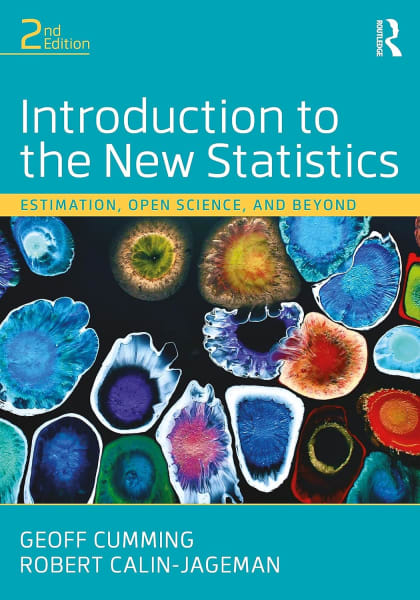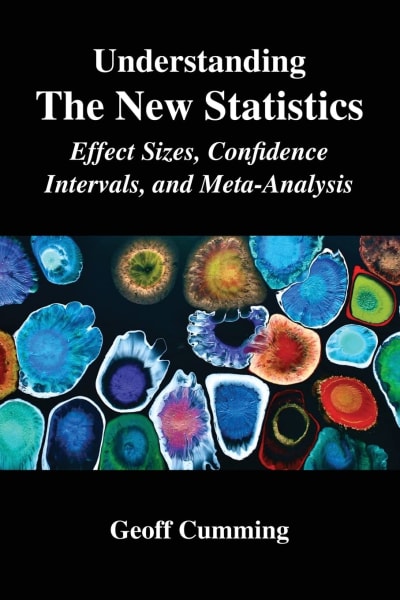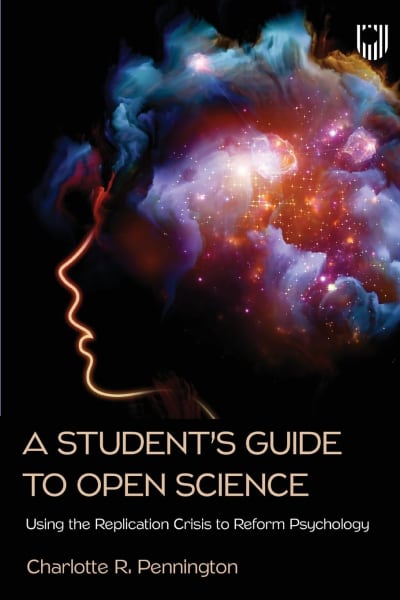
Geoff Cumming
I hope my statistics textbooks will change the world. My main site, with blog, is at: www.thenewstatistics.com
Very exciting! The SECOND ED. OF OUR INTRO BOOK was released in March 2024.
I gradually shifted my statistics teaching from significance testing — traditional but bamboozling — to estimation (confidence intervals), which I called "the new statistics" because, although not new, relying on it would, for many researchers, be very new. It’s more informative, makes sense, and is a pleasure to teach and use. I "retired" to write my first book "Understanding the New Statistics". Then Open Science arrived—hooray! Robert Calin-Jageman joined me for an intro textbook with Open Science and The New Statistics all through. Our first edition came out in 2017.
The second edition's enormous advance is Bob's esci software for data analysis. This is R-based and runs in the wonderful SPSS-killer jamovi. All is free and open-source. See www.thenewstatistics.com under the esci tab (choose 'esci in jamovi'), also new free online simulations and tools (choose 'esci web') by our colleague Gordon Moore. The esci in jamovi and esci web software is used extensively in the new edition of our book, and is also ideal for use in more advanced courses and by researchers.
THE NEW STATISTICS & SIGNIFICANCE ROULETTE We simply must move on from statistical significance testing and p values to something better. I advocate estimation and meta-analysis, i.e. the new statistics. To see why, check out these two videos: http://tiny.cc/SigRoulette1 http://tiny.cc/SigRoulette2 OR, at YouTube, search for "dance of the p values", and "significance roulette".
OUR INTRO STATS TEXTBOOK Our introductory textbook assumes no previous statistics knowledge. The book takes an estimation approach from the start, and also introduces and explains Open Science--the new techniques needed to increase the replicability and trustworthiness of research. Over the last decade, Open Science practices have been sweeping across many scientific disciplines--a development that may be the most important recent advance in how science is done. Our book also explains statistical significance testing, and warns about its problems. Ours is the first introductory statistics text that presents the new statistics (i.e., estimation and meta-analysis) and Open Science, and does so all through. It is the way of the future, which all students should be learning about now.
Cumming, G., & Calin-Jageman, R. (2024). Introduction to The New Statistics: Estimation, Open Science, and Beyond. 2nd edition. Routledge.Information, and download of the Contents, Preface, and Chapter 1, are available from the Publisher's website, at: https://tiny.cc/itnsroutledge That first chapter is a very easy read, with no formulas, and is a quick way to appreciate what the book offers, and how it differs from all other introductory statistics textbooks.
ENDORSEMENTS OF THE SECOND EDITION “Cumming and Calin-Jageman are psychology’s New Statistics evangelists, and with this text they demonstrate how to train our field’s newest scholars...”
Beth Morling, Professor of Psychological and Brain Sciences, University of Delaware
Author of ‘Research Methods in Psychology’, and winner, 2023 Brewer Distinguished Teaching Award“If I were teaching introductory statistics to undergraduates, this is the textbook I’d use. The things that make it distinctive are first, the focus on estimation rather than p-values (though the latter are covered), second, the link with free open-source software that allows users to explore analyses and visualisations, and third an emphasis on open science practices...”
Dorothy Bishop, Emeritus Professor of Developmental Neuropsychology, University of Oxford“Introduction to the New Statistics is a next generation statistics textbook. Doing statistics is not the rote application of formulas and reporting answers... New Statistics integrates two features that are absent from other texts: meta-analysis and open science... New Statistics deftly integrates open science in every chapter to illustrate how transparency and rigor are fundamental to doing statistics well.”
Brian Nosek, Executive Director, Center for Open Science, Professor, University of Virginia“A clear and accessible introduction to statistics... The focus on open science and integration with statistical tools (e.g., jamovi) makes the book particularly useful for training future researchers.”
Simine Vazire, Professor, Melbourne School of Psychological Sciences, University of Melbourne
Editor-in-Chief, ‘Psychological Science’THE FIRST BOOK My earlier book also took an estimation approach, after explaining why that's much better than using statistical significance testing. It includes three chapters on meta-analysis.
Cumming, G. (2012). Understanding The New Statistics: Effect Sizes, Confidence Intervals, and Meta-Analysis. New York: Routledge.

